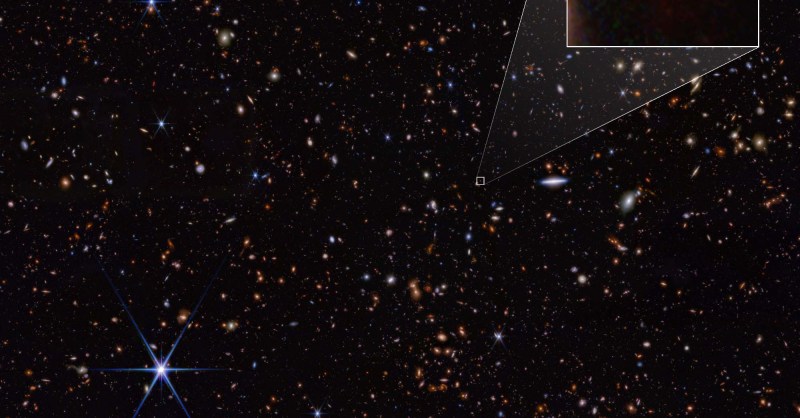Researchers discover most distant galaxy with James Webb Space Telescope
Researchers using the James Webb Space Telescope have discovered the most distant known galaxy to date, one that is so far away that it existed just a few hundred million years after the Big Bang. Since Webb began its science operations in 2022, astronomers have used it to look for very distant, very ancient galaxies and have been surprised by what they found. Not only have they found many of these distant galaxies, but the galaxies are also brighter and more massive than they expected — suggesting that galaxies evolved into large sizes faster than anyone imagined.
The newly discovered galaxy, called JADES-GS-z14-0, is named after the JWST Advanced Deep Extragalactic Survey (JADES) program and has a redshift of over 14. Redshift is a phenomenon in which light that is coming from a very distant object is pushed toward the red end of the spectrum due to the expansion of the universe, so the further away something is, the more red its light appears. For the very early galaxies observed by Webb, their light has been shifted so far to the red end of the spectrum that it no longer appears as visible light, but instead as infrared. Webb’s infrared instruments (unlike, say, the primarily visible light instruments used by telescopes like Hubble) are perfect for detecting these extremely distant galaxies.
And because light takes time to travel great distances, finding very distant galaxies is like looking back into the past, as these galaxies appear as they were when the universe was still very young.
In the case of JADES-GS-z14-0, scientists were surprised to see such a bright galaxy at this early stage of the universe. “The size of the galaxy clearly proves that most of the light is being produced by large numbers of young stars,” explained researcher Daniel Eisenstein from the Center for Astrophysics | Harvard & Smithsonian in a statement, “rather than material falling onto a supermassive black hole in the galaxy’s center, which would appear much smaller.”
This brightness suggests that big, bright galaxies could form in this early period, contrary to what was commonly believed before the launch of Webb. “JADES-GS-z14-0 now becomes the archetype of this phenomenon,” said researcher Stefano Carniani of the Scuola Normale Superiore in Pisa, Italy. “It is stunning that the universe can make such a galaxy in only 300 million years.”
New data like the discovery of this galaxy is changing the way that astronomers think about the evolution of galaxies in the early universe. “This amazing object shows that galaxy formation in the early universe is very rapid and intense,” said Ben Johnson of the Center for Astrophysics, “and JWST will allow us to find more of these galaxies, perhaps when the universe was even younger. It is a marvelous opportunity to study how galaxies get started.”
The research will be published in three upcoming papers.
Source: www.digitaltrends.com


